The Magic of Colored Diamonds
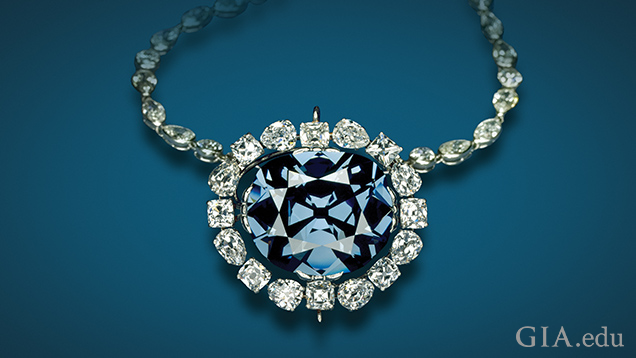
Colored diamonds are in the spotlight. They’re routinely breaking records at auction houses. They make headlines when set in celebrity engagement rings. And they’re gemological marvels of the rarest order.
Seen in practically every color of the rainbow, colored diamonds are far rarer than diamonds in the D-to-Z color range. Only one out of 10,000 carats of fashioned diamonds displays fancy color, and a diamond’s chances of displaying intense color are even less – one in 25,000. Browns and yellows are the most common fancy colors. Red, green, purple and orange are the rarest.
GIA® issued its first origin-of-color reports for colored diamonds in 1956. Backed by decades of research and the examination of thousands of colored diamonds, the GIA Colored Diamond Grading System has become the standard for evaluating these extremely rare gems. Current GIA Colored Diamond Grading Reports describe color grades using these terms: Faint, Very Light, Light, Fancy Light, Fancy, Fancy Dark, Fancy Intense, Fancy Deep and Fancy Vivid. Virtually every colored diamond sold at major auction houses has been graded by GIA.
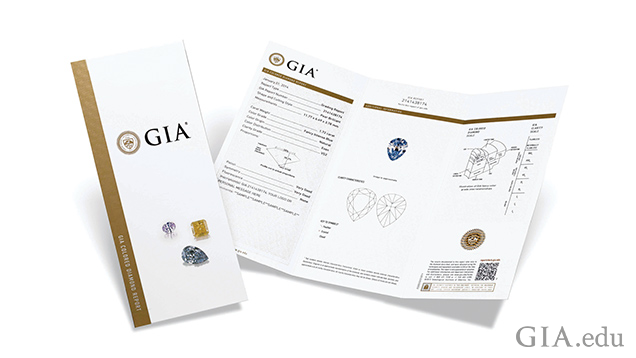
“The GIA Colored Diamond Grading System allows a much more detailed description of diamond color than what had been available under the previous grading system. This has greatly facilitated trading of such stones worldwide, particularly as new sources expanded the quantities of stones in the market and the range of colors,” observed Russ Shor, senior industry analyst at GIA.
Pink
GIA researchers theorize that the color in many pink diamonds is caused by color centers that can selectively absorb light in the visible region of the spectrum. Color centers are the result of lattice defects, or imperfections in the arrangement of atoms in a crystal. These defects can sometimes cause pink graining in the diamond crystal.
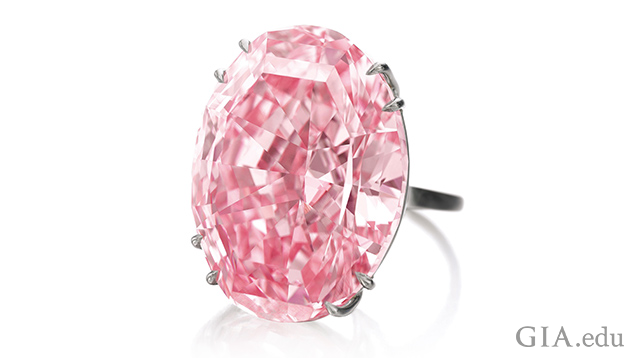
Black
Most naturally colored black diamonds get their color from large quantities or clouds of minute mineral inclusions such as graphite, pyrite or hematite that extend throughout the stone. These diamonds may also have numerous cleavages or fractures that are stained black or have become black because of graphitization. Concentrations of these internal features are responsible for the coloration. However, the actual body color of a natural black diamond may range from near-colorless to brown or “olive” green.
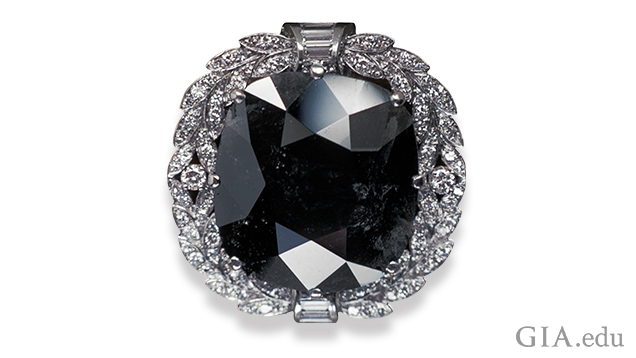
Yellow
The presence of nitrogen causes a diamond to appear yellow. The intensity of the yellow color is dependent upon varying amounts of nitrogen. Yellow diamonds are considered to be a colored diamond and graded as “Fancy” when they fall outside the D-to-Z range (colorless to light-yellow).
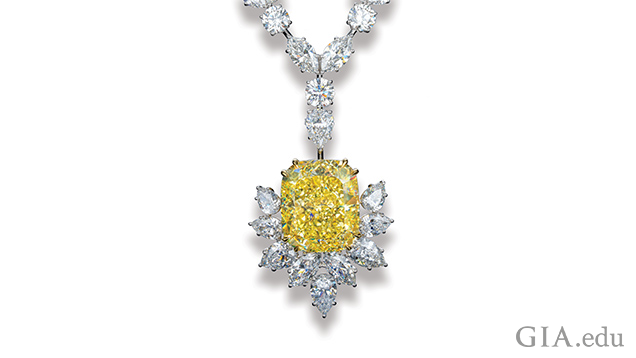
Brown
Once relegated to industrial use, brown diamonds gained cachet in the 1980s when marketers gave them romantic names like champagne, cognac and chocolate. The color in natural brown diamonds is caused by internal parallel brown grain lines due to distortion of the crystal lattice (arrangement of molecules). Brown diamonds are generally more affordable compared to other fancy colors.
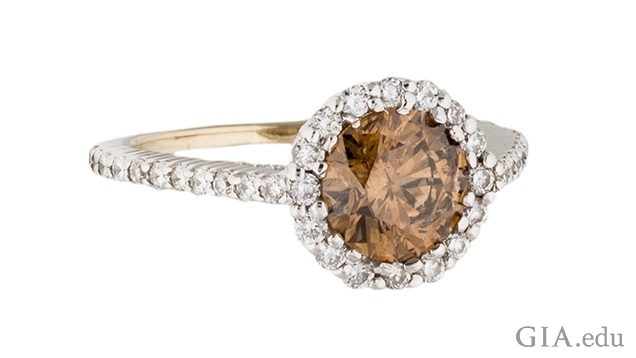
Blue
The presence of boron impurities is often responsible for the color of natural blue diamonds. The more boron, the deeper the blue. However, their color can also be caused by radiation exposure or associated with hydrogen. India was historically the source for blue diamonds. Within the last several years, notable blue diamonds have been found at the Cullinan Mine in South Africa.
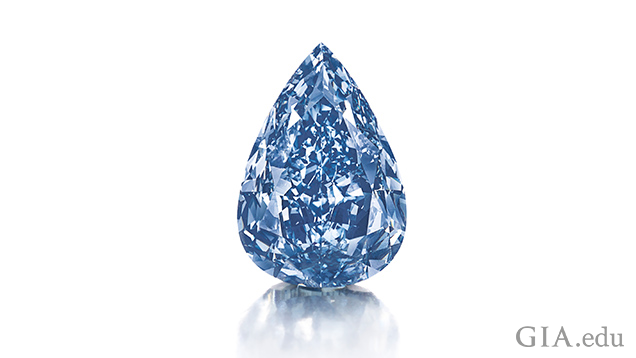
Red
Only a handful of red diamonds larger than 5 carats have been found. Red diamonds are so rare that from 1957 to 1987 GIA did not issue a lab report for a diamond with “red” as the only descriptive term. “Predominantly red” means that red is the primary color with no secondary hues (like purple). GIA researchers, who have been studying diamonds for decades and have access to the most sophisticated equipment, are still not sure what causes their color.
Green
Green diamonds get their color when radiation displaces carbon atoms from their normal positions in the crystal structure. This can happen naturally when diamond deposits lie near radioactive rocks, or artificially as a result of treatment by irradiation. Naturally colored green diamonds are extremely rare. Because of their rarity and the very real possibility of treatment, green diamonds are always regarded with suspicion and examined carefully in gemological laboratories. Even so, advanced gemological testing can’t always determine color origin in green diamonds. Examined by GIA Researchers in 1988, the 41 ct Dresden Green diamond is the largest, and perhaps the finest, green diamond known to have a color of natural origin.
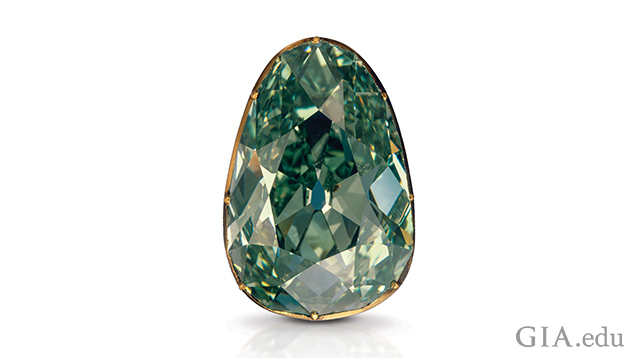
Synthetic Colored Diamonds
In recent years, gem-quality synthetic colored diamonds have come to market. A Russian company, New Diamond Technology, produced a 10.08 carat diamond with a color grade equivalent to Fancy Deep blue, which GIA examined in September 2016. GIA also offers Synthetic Colored Diamond Grading Reports for synthetic colored diamonds.
Colored diamonds are exceedingly rare and exceptionally beautiful. Because of this, interest in them is not likely to wane. Expect these rarities of the highest order to continue to captivate gem aficionados and the public.



